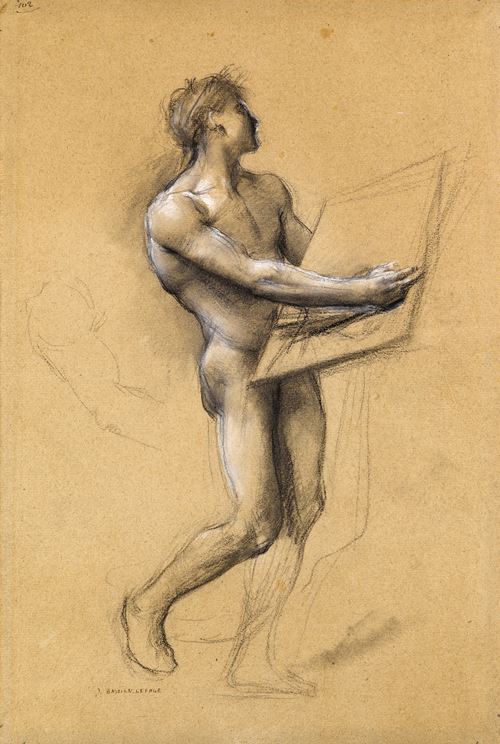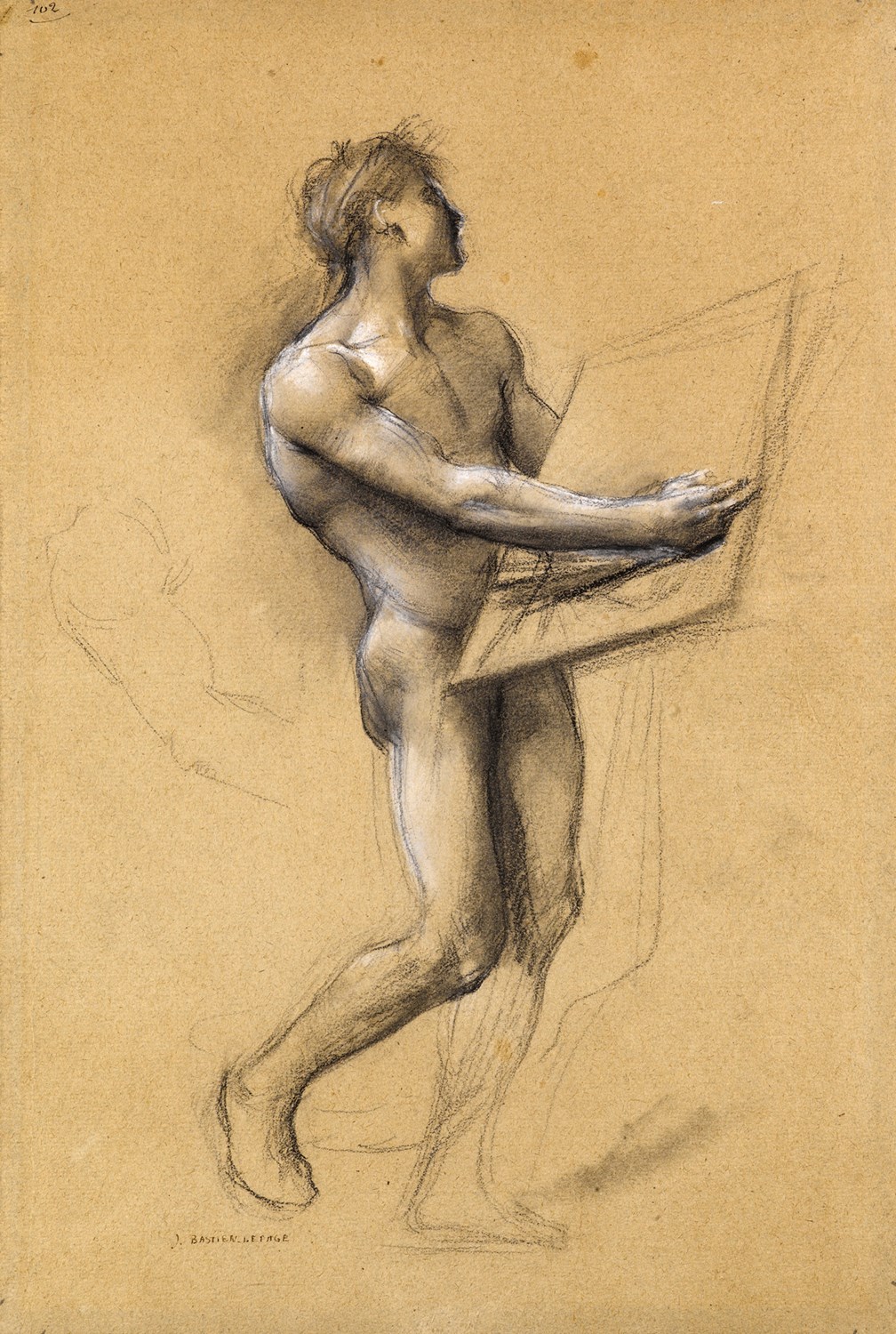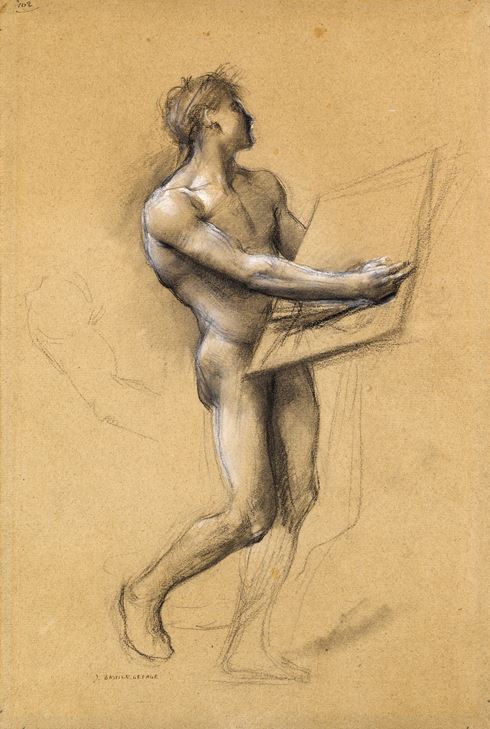
Jules BASTIEN-LEPAGE
Damvillers 1848 - Paris 1884
Biography
One of the foremost Realist painters of the late 19th century in France, Jules Bastien-Lepage enjoyed a brief but remarkably successful career of barely fifteen years. Born Jules Bastien in the town of Damvillers, north of Verdun in the département of the Meuse, he adopted the professional surname Bastien-Lepage very early in his career, adding his mother’s maiden name to his own. He studied at the Ecole des Beaux-Arts in Paris, entering the studio of Alexandre Cabanel, and achieved his first public success at the Salon of 1874, where both paintings he exhibited were later purchased by the State. It was during the mid-1870’s that Bastien-Lepage, who had already achieved success as a portrait painter, found himself at an artistic crossroads; torn between the demands of the Académie for important historical, religious or mythological subjects, and his abiding interest in peasant genre scenes. His failure to win the Prix de Rome in 1875 and 1876 seems to have been the catalyst towards abandoning any pretence of a career within the official art circles of the Académie, in favour of a Realist painting characterized by a rustic naturalism.
Bastien-Lepage soon established a reputation as a painter of portraits and genre scenes of peasant life, which proved very popular among collectors. He also painted the occasional historical subject, notably the large canvas of Joan of Arc Listening to the Voices, now in The Metropolitan Museum of Art in New York. Despite Bastien-Lepage’s international fame, however, his reputation dimmed soon after his death of cancer at the young age of thirty-six, and his work became little more than a footnote in most early studies of French 19th century painting. It was not until the last quarter of the 20th century that his paintings were rediscovered and underwent a scholarly reappraisal, and his importance as one of the leading artists of the Realist tradition in France was fully recognized.


